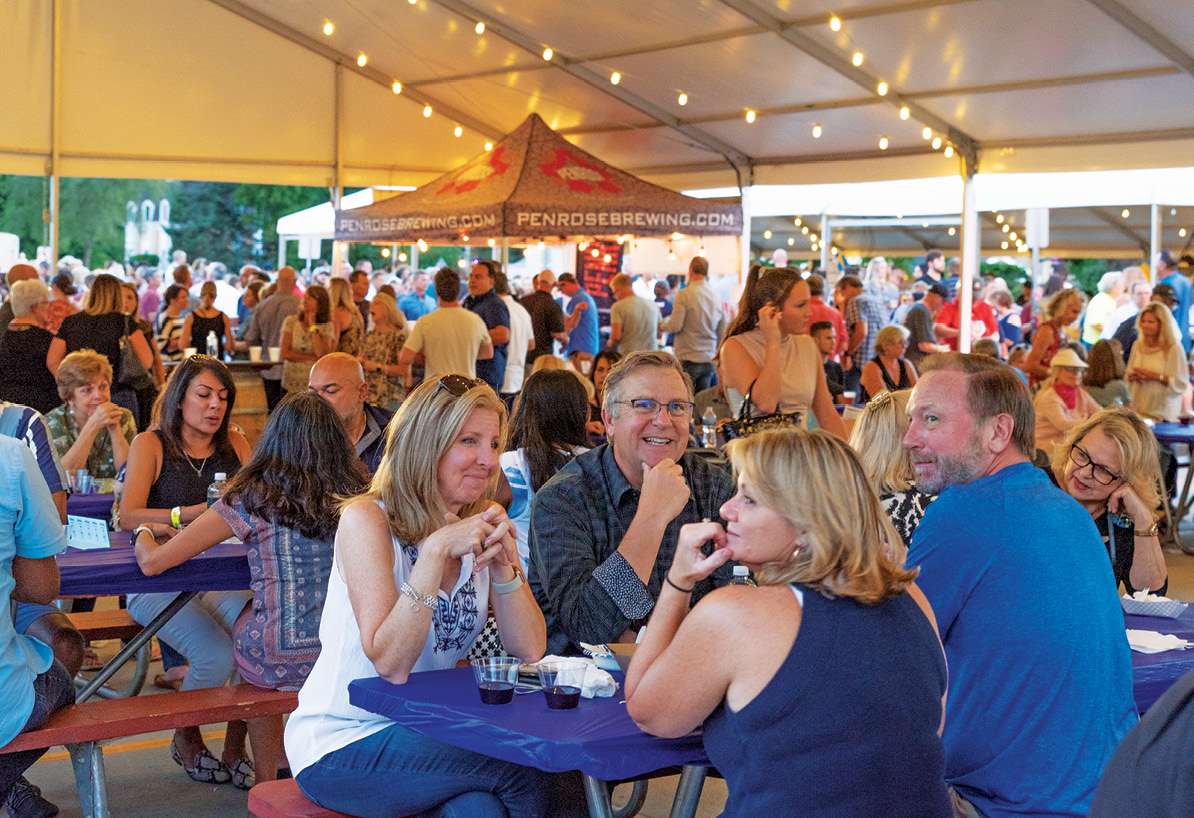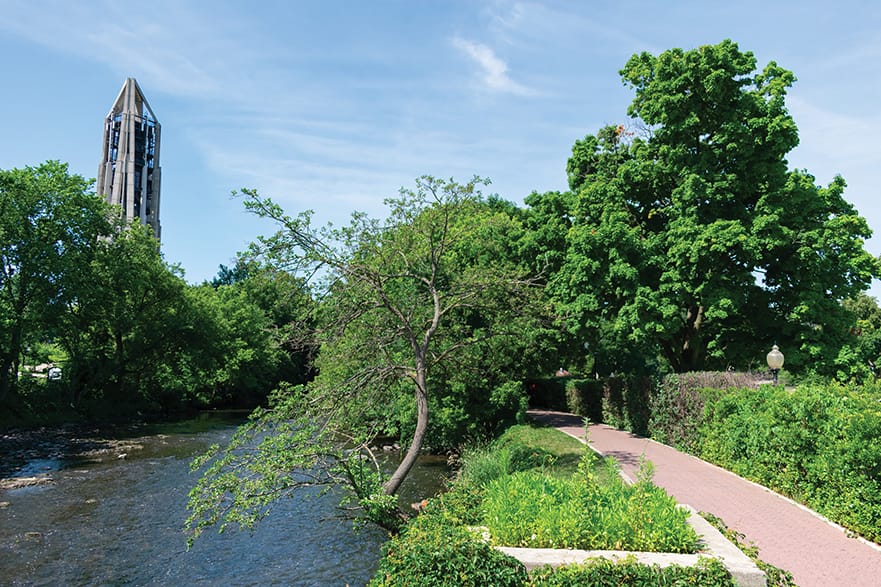Some of America’s most livable towns and cities can be found along the banks of more than 7,000 miles of rivers that flow through the Land of Lincoln. Rivers have played a profound role in all that is Illinois, from the state’s early settlement to its commercial foundations, economic development and rich, Midwestern fabric.
More than ever, Illinois’ riverfronts have come to serve as social and economic hubs, hosting as they do businesses, festivals, communal gathering spots and places to simply play. Here are five among the many of Illinois’ riverside cities that boast exceptional standards, affordable costs of living and unique cultural offerings.
Naperville Is Accolade City
What better place to begin than Naperville? Nestled along the banks of the DuPage River, the bustling Chicago suburb has amassed a stockpile of national endorsements that only seems to grow by the year. In 2023, Naperville rose to No. 4 on Niche.com’s ranking of Best Cities to Live in America. The popular website’s annual survey identified Naperville as the No. 1 best city in which to raise a family, No. 1 for public schools and the third-best city in which to buy a home. Rounding out Naperville’s impressive haul of plaudits, MoneyGeek crowned it as America’s safest city in a recent survey.
Created in 1981 to honor Naperville’s 150th anniversary, the Riverwalk is billed as the city’s “Crown Jewel.” The two-mile trail trek along the DuPage’s West Branch wends past dozens of parks, pavilions, outdoor sculptures, meeting spaces, memorials and recreational spots such as its Paddleboat Quarry and Fishing Pier and a Millenium Wall & Labyrinth. Seasonal celebrations include a summer concert series, July’s annual Ribfest and a Halloween Happening each October at the Riverwalk’s Grand Pavillion.
Springfield: Not Too Big, Not Too Small
Springfield, on the scenic Sangamon River, is a shining oasis in the heart of Illinois, one that blends small town tranquility with amenities worthy of a major metropolitan. With a congenial population of 113,000 residents, the Illinois state capital boasts an outsized arts and entertainment scene and a thriving startup culture bolstered by Innovate Springfield, a downtown business incubator.
Springfield enjoys a comfortable cost of living that is notably lower than most locations its size, a proposition confirmed by a recent WalletHub ranking that placed Springfield among the Top 10 most affordable cities for homebuyers. Cutting edge medical facilities and providers include Memorial Health System, Hospital Sisters Heath System, SIU Medicine and Springfield Clinic.

Geneva’s Festival of the Vine
Photo courtesy of Karen Muehlfelt Keeping Moments Photography/Geneva Chamber of Commerce
“With an economic base built on medical services and governmental agencies, and as the home base for several national and international companies, Springfield offers one of the most stable economies in the U.S.,” says Julie Davis, managing broker with The Real Estate Group. “It’s a lifestyle,” Davis said in a release provided by the Springfield Sangamon Growth Alliance, “that fits the single person, young families, empty nesters, and retirees alike.”
The Past Lives in Galena
With its stunning, 19th century architecture, Galena is a trip back in time. The Galena Historic District, named to the U.S. National Register of Historic Places, covers close to 90% of the city and is graced by more than 1,000 buildings constructed before 1900. Its most notable sites include the Ulysses S. Grant Home, Old Stockade on the Cobblestone Street, Council Hill Station and Old Market House.
While Galena is a town that modernization may have skipped, it projects a distinctly forward-leaning vibe. Galena’s Helluva Half Mile counts more than 100 boutiques, restaurants and galleries, all of which serve to foster a famous sense of belonging in the village of fewer than 5,000 people. The Galena River meanders through lush, green fields as it flows toward historic Galena.
Geneva: A Picture of Prosperity
On the tranquil Fox River about an hour west of Chicago, Geneva notched a median household income of $126,759 in 2021, a whopping 80% higher than the national average. Johnson Controls, North American Logistics, Millard and Houghton Mifflin are among the biggest employers in the tidy city of 21,000 people. Geneva’s thriving local economy blends with postcard perfect parks, inviting neighborhoods and abundant examples of adaptive re-use architecture.
Each June, the city celebrates its Scandanavian heritage during Geneva Swedish Days, a weeklong festival of carnivals, parades, music, food and locally brewed beer. Held in late July, the Geneva Arts Fair has earned national recognition since its inception in 2002, including a Top 10 ranking among Best Arts Fairs in America by artfaircalendar.com. Festival of the Vine, in September, celebrates “anything grown on a vine,” says Laura Rush, communications director for the Geneva Chamber of Commerce.
Preserving Quincy
Twenty miles north of Hannibal, Missouri on the banks of the Mighty Mississippi, picturesque Quincy is a living display of architectural wonders spanning virtually every notable movement from the early 19th century forward. Home now to the ornate Quincy Museum, the Newcomb-Still Mansion holds down a spot at 18th and Main Streets, identified by National Geographic as one of the 10 most architecturally significant intersections in the U.S.
Once considered the most important river town in Illinois, Quincy is home to not one, but four major historical districts. The city’s East End Historic District, about 10 blocks from the river, features designs from the Italianate, Greek Revival, Romanesque and Queen Anne movements. Quincy Preserves, an outgrowth of the Quincy Society of Fine Arts, works with owners of historically significant structures to restore and maintain them to their original condition. It has provided financial assistance to preserve such landmarks as the town’s Washington Theatre, Woodland Cemetary, John Wood Mansion and the Gardner Museum.

